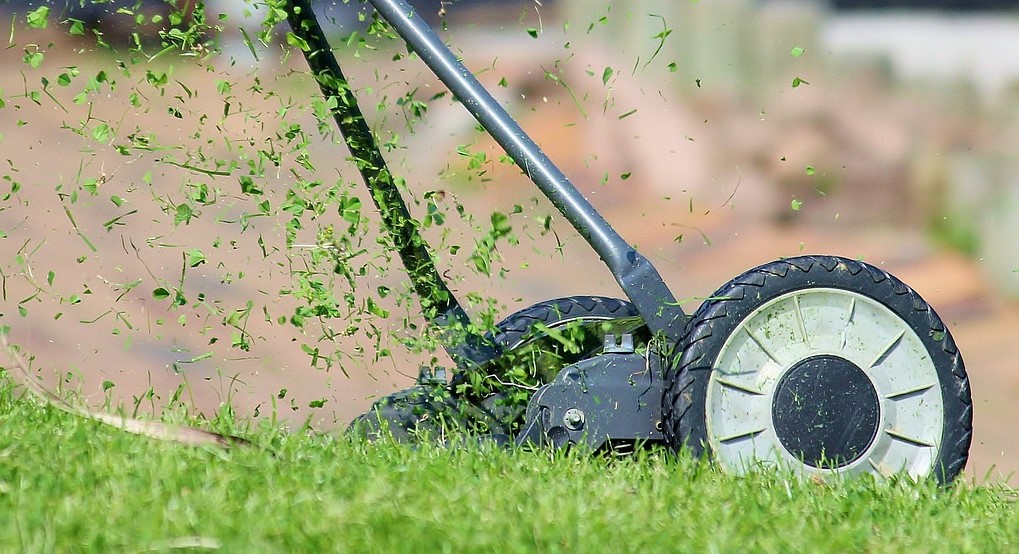If you cut it, it will grow. But only if you mow it the correct way. Mowing seems simple enough, but each time you cut your grass you’re paving the way for your lawn’s success or failure. Mow correctly, and you’ll have turf that’s healthy and thick. Mow incorrectly, and your lawn will struggle to survive. Discover the basics of mowing and why it’s so vital to growing a healthy lawn with our best mowing tips.
Set Your Mower High
Set your expectations high and your mower higher. We recommend cutting at 3-4 inches. Only cut the top 1/3 of the grass blades at any one time. This may mean you have to mow again after several days, but it’s worth it. The longer grass blades can grow and support more roots and develop a deeper root system that is better able to find water and nutrients in the soil. Cutting too aggressively, or scalping your lawn, forces grass plants to focus their energy on regrowing their blades. Scalping the lawn also makes your lawn more prone to weeds. Taller grass blades shade the soil and keep it cooler, helping prevent weed seeds from sprouting. Plus, there are other benefits: taller grass is softer to walk on and helps cushion falls better than short grass.
Mow a Dry Lawn
Go ahead, sleep in. The best time of day to mow a lawn is in the early evening. Mowing at the peak of day, when temperatures are highest, stresses both the lawn and the mower. If you wait until the early evening, the lawn is usually dry—unless it has rained during the day. Plus, the sun is not as intense, and the lawn will have ample time to recover before the next afternoon’s heat arrives. Even without rain, lawns are usually wet in the morning because of moisture from dew. Rain or shine, wait for your lawn to dry before mowing, as cutting wet grass can result in an uneven trim and promotes and spread disease. Wet clippings can also block your mower and cause it to dump clumps of grass on your lawn; if they aren’t raked up, they can smother the growing grass and result in brown spots.
Grasscycling
Yes, it’s a thing. When you let grass clippings lie on the lawn after cutting, that’s called grasscycling (link to blog). It not only saves you time, but it’s good for your lawn. Grass clippings can provide up to 25 percent of your lawn’s fertilizer needs. You don’t need a specialized mulching mower, although you might want to replace your current mower blade with a mulching blade, which cuts grass into smaller pieces that decompose quickly. You can grasscycle with minimal fuss and mess. To avoid being sprayed with grass clippings while mowing, purchase an adaptor kit for your mower that supplies a plug to fill the hole where clippings normally exit the mower deck.
Mowing Pattern
Your neighbors pretty patterned lawn, is more than pretty. It’s healthy. Avoid mowing in the same path or pattern each time you mow. When you do this, you risk compressing soil and actually creating ruts. Both compacted soil and ruts can lead to grass that’s less healthy, followed by weeds that thrive in compacted soil. By varying the mowing pattern, grass will stand up nice and tall since it will be mowed from all different directions.
Keep Your Mower Blade Sharp
We have a preference for a clean-cut look, and so should you. For the cleanest cut, sharpen mower blades at the first sign of wear. Dull blades tear up grass, causing ragged, brown edges. Continually using a dull mower blade can also cause your grass to weaken over time, making it more susceptible to disease, insect damage, and other stresses. Invest in a mower tune-up and blade sharpening once a year. Your mower will start easier, make cleaner cuts, and slice your clippings without bogging down the mower blades. Also, remember to wash your mower after each use, to help prevent any blockages within the mower itself.
You can count on our lawn care experts to provide expert advice and reliable services, like expert mowing. For a “no worries, we got this” all-encompassing plan check out our Full Service Program. We give your lawn everything it needs to stay looking good.



